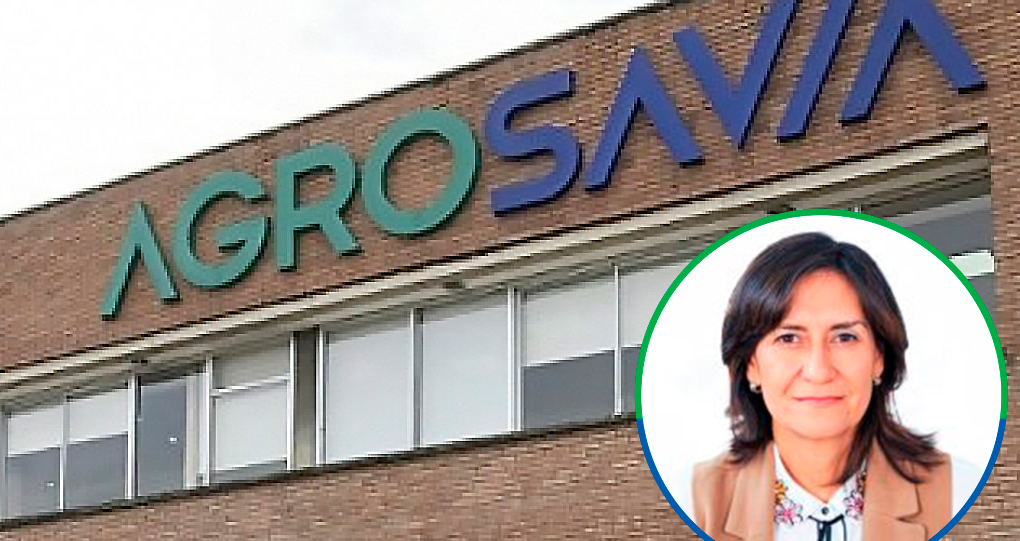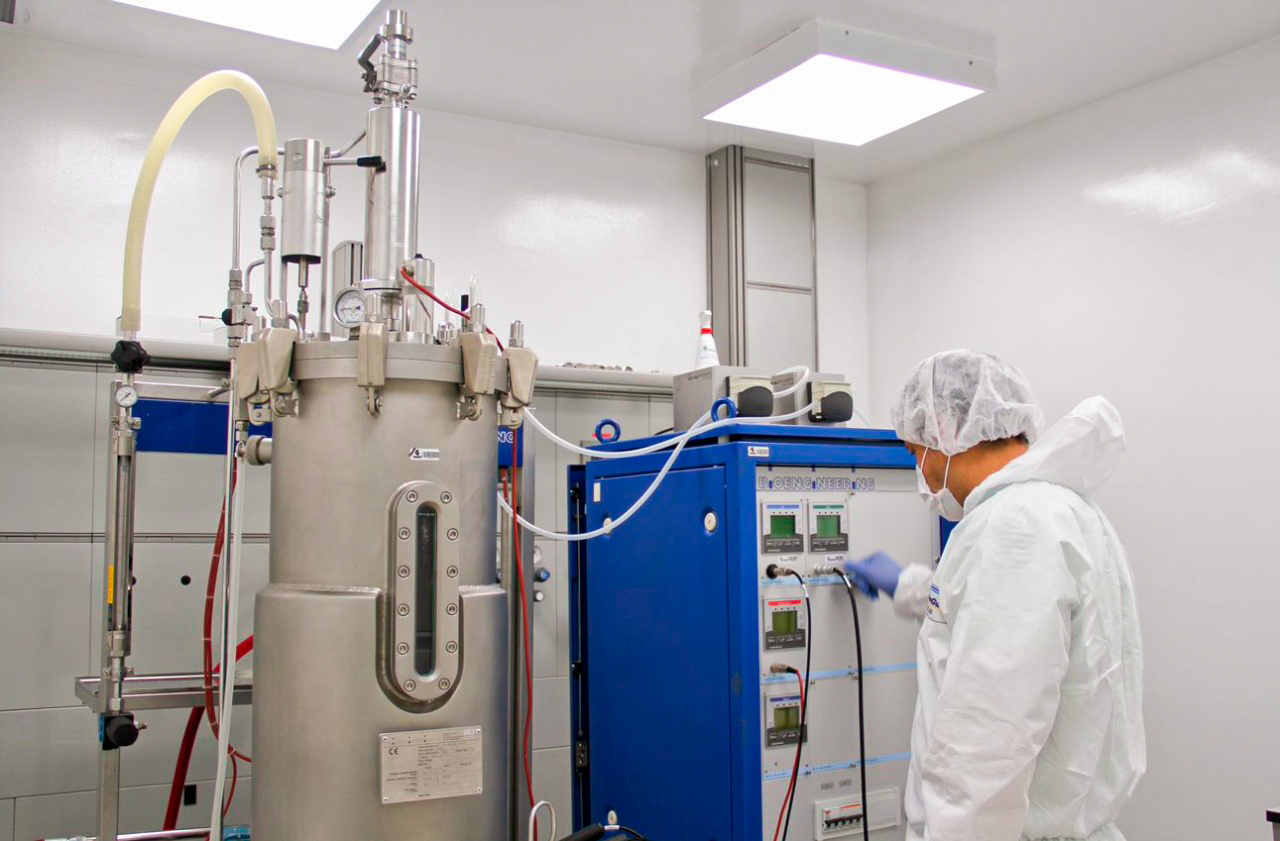17/Feb/2022
#02
SUBSCRIBE TO OUR NEWSLETTER
Suscríbete a nuestro newsletter
Last issue articles
- Biome: the space gaining protagonism in biological strategies for crops
- The export dynamics driving the Mexican biologicals market
- New model developed to evaluate effects of two or more biostimulants combined in a single crop
- Dr. Wagner Bettiol and the biocontrol market in Brazil
- Las propiedades que hacen del Trichoderma un socio clave en la búsqueda de mejores desempeños en los cultivos
- Changes in the new regulation on fertilizers and biostimulants in Chile
- Innovak Global, the expansion of root specialists
Market movers
- Renewable-based nitrogen fertilizer firm raises US$ 20 million in investment round
- Bayer and Ginkgo Bioworks close agreement to strengthen open innovation platform for agricultural biologics
- Argentinean firm Puna Bio: Millions raised to study superbacteria for agricultural use
- Corteva Agriscience signed an agreement to acquire leading biologics company Symborg
- Brazilian study uncovers ants' potential in crop protection
- Huber acquires specialty plant nutrition producer Biolchim
- UPL announces agreement to distribute bioprotector based on orange oil
- ICL and Lavie Bio start strategic collaboration to develop new biostimulants
- Hortitool and Green Smile to organize the Morocco Berry Conference 2022

How To Avoid “The Valley Of The Death” In Biologics Formulation
With the creation of their new product Tricotec, Colombian state-owned company Agrosavia has developed a new management model to overcome one of the main problems in research centers: the lack of financing and management needed for their investigations to leap from the scientist's desk and enter the market.
F. Aldunate M.
For the Colombian scientist Martha Gómez, there is a key moment in the development of biological products: the time between the scientific discovery and its final reception by the market. "We call it the “valley of death”" she says. "That part that almost never has financing, that part that is almost never managed."
It was the reality that prevailed in Agrosavia, the Colombian state entity dedicated to promoting research and development of new products for agricultural activity and where Gómez presides the bioproducts division. She remembers that until a few years ago, a large part of the innovations that the scientific body developed in Agrosavia could not escape from that valley of death. "Until a few years ago, everyone did research and did nice things, but it stayed in the researcher's desk," she says, describing a general problem in research centers. “When we discovered something nice, we wrote a paper, scientific papers, but that was as far as it went. And we stayed like that for a long time, too long.”
From her office in Bogotá, Gómez, who has a Ph.D. in Biochemistry and Pharmacy and director of vinculation at Agrosavia, says that the organization decided to increase its impact in the dynamic area of agricultural bioproducts precisely aiming to resolve this gap between research laboratories and the market. It’s a process that has already produced results, such as the industrial development of Tricotec, a fungicide based on the antagonistic fungus Trichoderma koningiopsis strain Th003, and which is now a sought-after product by Colombian rose growers. Trichoderma koningiopsis strain Th003, and which is now a sought-after product by Colombian rose growers.
In fact, Tricotec had fallen into that valley for many years. The initial idea for this product originated decades ago, in the early 1990s when the prominent Colombian biologist Alba Marina Cotes isolated the Th003 strain for pathogen control in her doctoral thesis.
It was not only an issue of time having to pass for the new discovery to reach the market in the last five years. It was also necessary to make a change in the management model of biological products in the organization and have new scientists and doctors with a new mentality. This took place in 2018, when Agrosavia launched a new Products Department dedicated specifically to finding formulas so that scientific developments reached the market. “It is a specialized group that is dedicated to analyzing the research carried out in Agrosavia from the point of view of technical and economic pre-feasibility, which allows selecting the ones that can lead to a commercial product,” she says. “In this team you won’t find the biologist or the entomologist, because they are at the beginning of the process formulating concepts. Here what you will find are chemical engineers who know about processes, chemical-pharmaceuticals who know about product development, biotechnological engineers who give you perspective, people who know about marketing, who know how to propose, people who can do a technical and economic pre-feasibility analysis for you, people who determine costs”. They are joined by a team led by Gómez herself, dedicated to negotiating, manufacturing and distribution alliances.
In fact, a good part of Agrosavia's PhDs were recruited during the building of this process. "We brought people from abroad, we filled this place with new people, with other specialties."

The Agrosavia process was designed to promote and select research projects that can be successful in the market. This includes an extensive check list until its formulation in its new pilot plant. If at this stage it is concluded that the product is scalable, partners are sought for its manufacture and distribution.
The search for partners
The product department designed a phase and a check list process through which each investigation must pass in order to continue in its development stage. Only after a series of approvals can a product be manufactured in the pilot plant implemented by Agrosavia, with machinery and fermentation granulation equipment that is larger than the ones in their laboratories. “But we only got so far. If the product is successful in this pilot plant, we look for possible allies to manufacture and distribute”, she says. "And this is possibly the hardest part." Gómez points out that many times these biological products, many of which are based on microorganisms, require formulation processes that few companies have locally. Or in the cases when they do have them, they do not have the capacity to undertake the production of external services. “It’s terrible. Sometimes we’ve even had to change formulation products because there is no one who can do that. This causes many wonderful products to be lost because there is no one to scale them,” she says. "Therefore one has to be very close to the industry."
In the case of Tricotec, for example, the company had to commission the manufacturing process to the Brazilian Farroupilha Lallemand laboratory, which was already carrying out formulation work with the fungus strain. However, this brought on a new difficulty: overcoming the logistic complexities involved in the export and re-import of bio-organisms. "Everything that is a biological resource has to go through a lot of regulations in each country and even more so if they are for commercial purposes," she says. “In Colombia, we had to do all the paperwork to get the strain out and explain that we were going to bring it back in again. Not to mention that in Brazil they ask for a lot of things so that it can enter as a product, in kilos”. The process is already running smoothly and allows a flow of up to two tons per year, despite the initial difficulties.
The larger-scale manufacturing process also led to a change in a relevant aspect of the Tricotec product, which was initially marketed as powder and later changed to a granular form. “Powder production involves grinding to a small particle size. This can cause leaking problems and possible effects on the fungus, because so much grinding can remove the cell wall." Moreover, these fines have additional difficulties when handling and applying, as well as a shorter lifespan "That's why we stick with the granular formulation," she says.
Thus, the organization is now prepared to take Tricotec into new markets, including new countries. Although it is focused on pests that attack ornamental flowers, in their tests they have already seen that it can reduce between 31% and 60% of known diseases such as tomato vascular wilt, caused by the phytopathogen Fusarium oxysporum, thinning of the tomato stem (Rhizoctonia solani), white mold on lettuce (Sclerotinia sclerotiorum and Sclerotinia minor), gray mold on berries (Botrytis cinerea), and rice sheath blast (R. solani).
The management model set to avoid “the valley of death” in Agrosavia, initiated by the Tricotec fungicide, has continued with new products in the biostimulant area as well as in animal nutrition, which has allowed the company to generate income that is reinvested in new research. “Everyone must follow the same route. It is the defined strategy so that our researchers' work on bioproducts reaches the market and achieves the greatest impact in the field”.
Last issue articles
- Biome: the space gaining protagonism in biological strategies for crops
- The export dynamics driving the Mexican biologicals market
- New model developed to evaluate effects of two or more biostimulants combined in a single crop
- Dr. Wagner Bettiol and the biocontrol market in Brazil
- Las propiedades que hacen del Trichoderma un socio clave en la búsqueda de mejores desempeños en los cultivos
- Changes in the new regulation on fertilizers and biostimulants in Chile
- nnovak Global, la expansión de los especialistas en la raíz
Market movers
- Argentinean firm Puna Bio: Millions raised to study superbacteria for agricultural use
- Corteva Agriscience signed an agreement to acquire leading biologics company Symborg
- Brazilian study uncovers ants' potential in crop protection
- Huber acquires specialty plant nutrition producer Biolchim
- UPL announces agreement to distribute bioprotector based on orange oil
- ICL and Lavie Bio start strategic collaboration to develop new biostimulants
- Hortitool and Green Smile to organize the Morocco Berry Conference 2022
About us
Biologicals Latam es una revista digital trimestral de Redagrícola que informa de manera especializada sobre la intensa actividad que se está desarrollando en el espacio de los bioinsumos para la producción agrícola. Esta publicación es complemento del Curso Online de Bioestimulantes y Biocontrol y las conferencias que este grupo de medios realiza en torno al tema.




